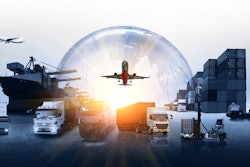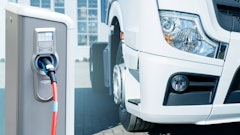
Cost efficiencies are the top priority among shippers and carriers in 2025 in response to new economic and governmental headwinds ahead of an expected market flip, according to Breakthrough’s 2025 State of Transportation report.
“2025 will test whether the industry can strike the right balance between resilience and sustainability,” says Jenny Vander Zanden, COO at Breakthrough. “As economic pressures evolve, shippers are staying committed to their broader sustainability goals, and are now focusing on adapting these strategies to maintain the level of success they’ve seen so far. Transportation plays a critical role in these sustainability efforts, and we’ve seen that world-class shippers who continue to achieve emissions reduction goals are taking proactive, diversified approaches within their transportation strategies to navigate uncertainty.”
Key takeaways:
- 97% of shippers made progress toward sustainability goals. However, today’s market dynamics and uncertainty are putting pressure on shippers and carriers to reduce costs, which could put further sustainability progress at risk.
- 52% of shippers have prioritized tracking Scope 1 transportation emissions, 38% are tracking Scope 3 transportation emissions, 37% are contracting with more sustainable carriers and 30% are increasing alternative energy usage.
- 67% of carriers say cost savings are actually an impetus for their sustainability efforts. In practice, 43% of carriers are tracking Scope 1 transportation emissions, 41% are upgrading to more fuel-efficient equipment, 39% are implementing fuel-efficient technologies into vehicles, and 39% are optimizing route planning to maximize fuel consumption.
- 55% are expanding their use of additional transportation modes and 47% are expanding volume with core strategic carriers. However, only 24% are optimizing routes and consolidating shipments for cost efficiency; potentially a missed opportunity.
- 49% plan to expand their fleets and services, 44% plan to sign more contracts with premium shippers, 43% plan to raise prices, and 43% plan to diversify their customer bases.
















![Pros To Know 2026 [color]](https://img.sdcexec.com/mindful/acbm/workspaces/default/uploads/2025/08/prostoknow-2026-color.mduFvhpgMk.png?ar=16%3A9&auto=format%2Ccompress&bg=fff&fill-color=fff&fit=fill&h=135&q=70&w=240)

